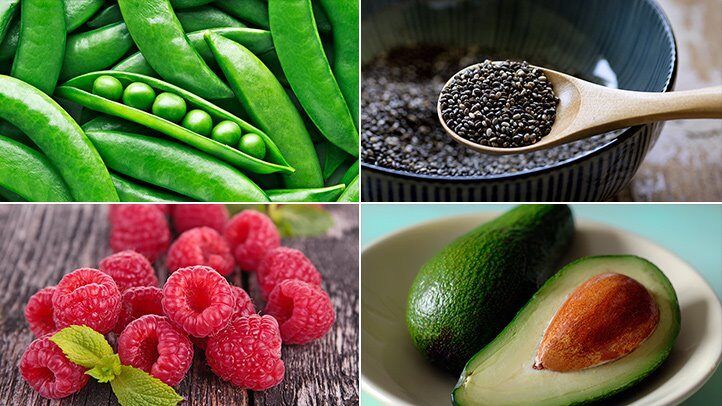
Getting your fill of fiber can seem tough, especially if you’re not in the mood for vegetables. But did you know popcorn has fiber? Keep reading for more high-fiber foods that you’ll actually want to eat
1. Beans
Lentils and other beans are an easy way to sneak fiber into your diet in soups, stews and salads. Some beans, like edamame (which is a steamed soy bean), are even a great fiber-filled snack. There are 9 grams of fiber in a half-cup serving of shelled edamame.1 A bonus? All of these provide a source of plant protein, too.2 Some bakers have even started including beans or bean flours in their baked goods, which research suggests can still make quality cakes.
2. Broccoli
This veggie can get pigeonholed as the fiber vegetable. Its cruciferous nature—meaning it’s from the Brassica genus of plants along with cauliflower, cabbage and kale—makes it rich in many nutrients in addition to fiber.4 Studies have shown that broccoli’s 5 grams of fiber per cup can positively support the bacteria in the gut, which may help your gut stay healthy and balanced.
3. Berries
Berries get a lot of attention for their antioxidants, but they’re full of fiber, too. Just a cup of fresh blueberries can give you almost 4 grams of fiber, and there is nearly the same amount of fiber in a cup of frozen unsweetened blueberries.7 Blackberries, strawberries and raspberries are also great sources of fiber.8 Of course, one of the biggest benefits of berries is that they’re naturally low in calories, too.9
4. Avocados
Avocados pretty much go with everything—toast, salads, entrees, eggs—and while they’re often recognized for their hefty dose of healthy fats, there are 10 grams of fiber in one cup of avocado (so just imagine how much is in your guacamole.
5. Popcorn
There’s one gram of fiber in one cup of popcorn, and the snack (when natural and not covered in butter, like at the movies) is a whole grain that can satiate cravings with a hit of fiber.11 It’s even been called the King of Snack Foods.
6. Whole Grains
Good news for bread lovers: Real whole grains, found in 100% whole wheat bread, whole wheat pasta, brown rice, and oats, have fiber. One tip to watch out for: as required by The Food and Drug Administration, whole grains should be the first ingredient on a food package in order for it to be considered a real whole grain.
7. Apples
That old saying that “an apple a day keeps the doctor away” isn’t necessarily true, according to research, but the fruit can boost your fiber intake. There are about 4 grams of fiber in an apple, depending on its size. And, of course, they’re a nice and crunchy snack.
8. Dried Fruits
Dried fruits like figs, prunes and dates can boost your fiber intake dramatically and are recommended for those struggling with occasional constipation.17 The sugar called sorbitol, which naturally occurs in these fruits, can help your bowels and lead to more comfort.17 However, eating too many can lead to cramping or diarrhea, so try a small serving and see how you feel once you’ve digested them, before noshing on too many more.17
9. Potatoes
Sweet potatoes, red potatoes, purple potatoes and even the plain old white potato are all good sources of fiber; one small potato with skin can provide close to 3 grams of fiber.18 The veggie has a bad reputation for running in the wrong crowds—fries and chips, to name a few. However, when not fried in oil and slathered in salt, potatoes can provide many benefits.19
10. Nuts
Nuts aren’t just a great source of protein and healthy fats—sunflower seeds and almonds each have more than 3 grams of fiber in a serving. They can help you reach the 25-gram intake of fiber recommended for women and 38-gram recommendation for men. Raw or dry-roasted nuts are preferred over the pre-packaged variety (which are usually cooked in oils that can add extra, unnecessary calories.














